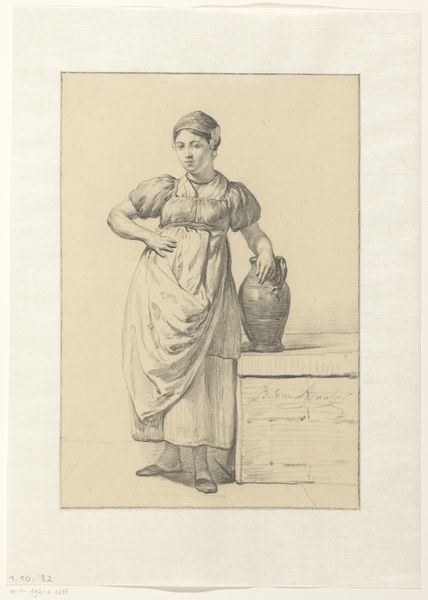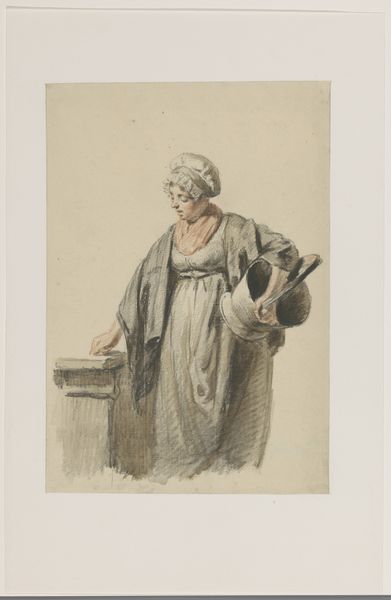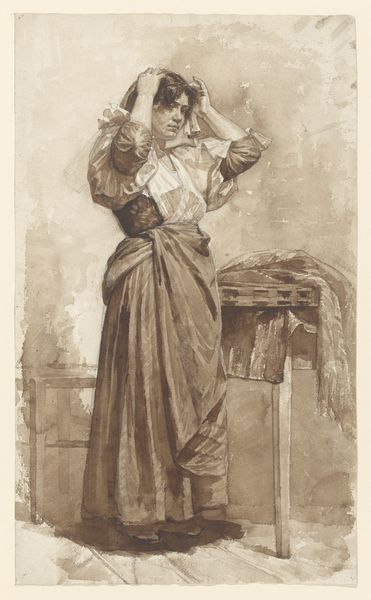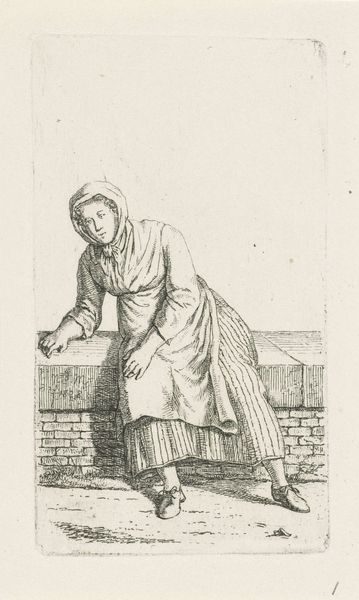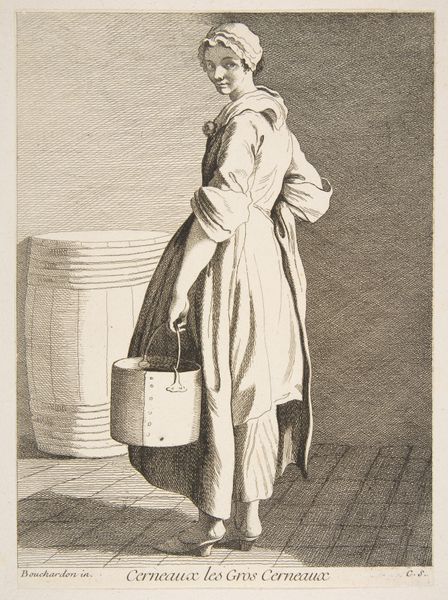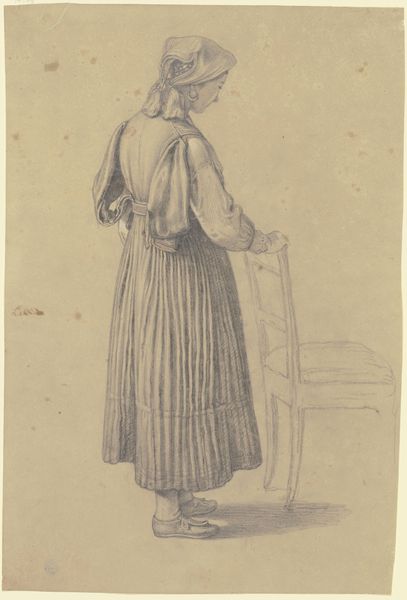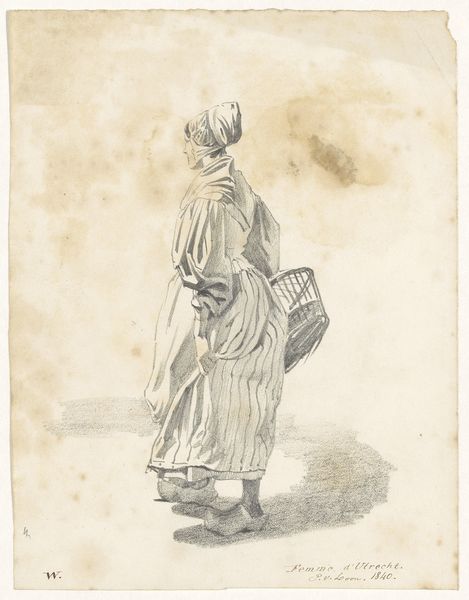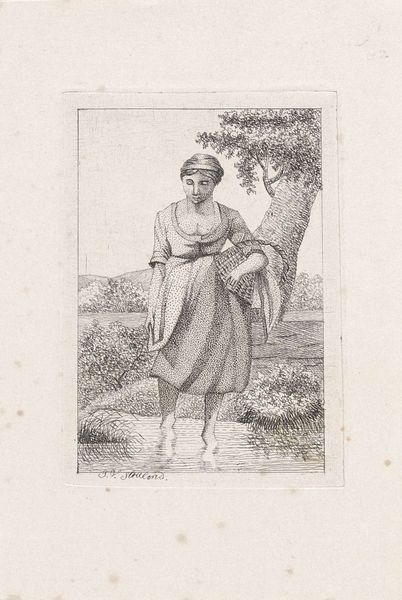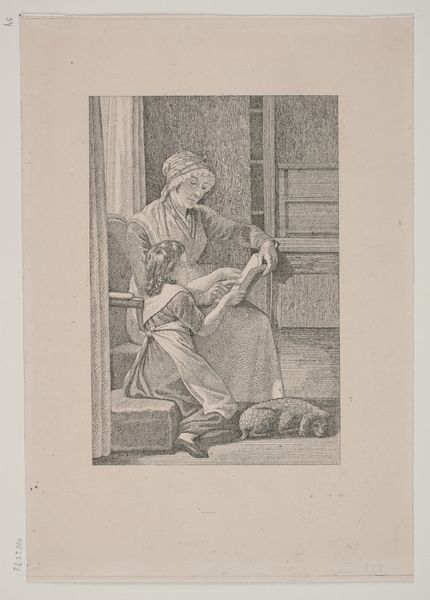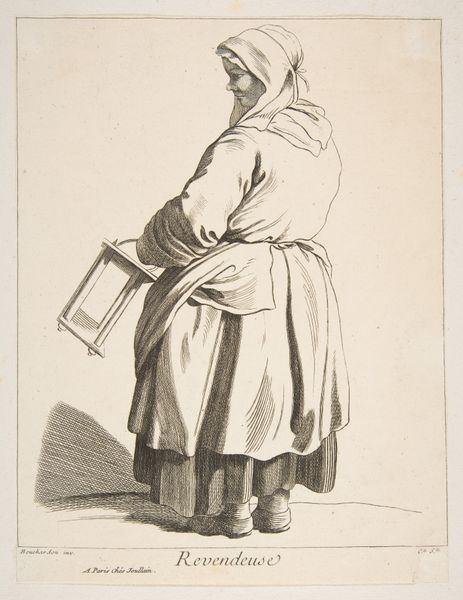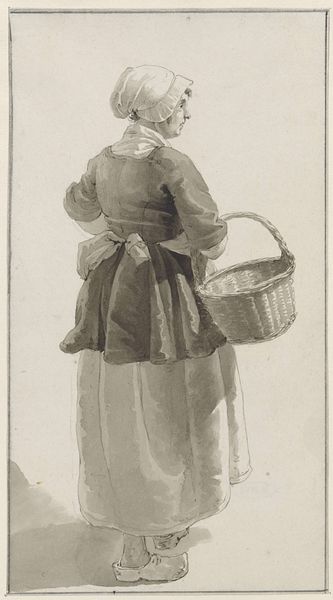
drawing, pencil
#
portrait
#
drawing
#
light pencil work
#
16_19th-century
#
pencil sketch
#
pencil
#
pencil work
#
genre-painting
#
realism
Dimensions: height 200 mm, width 150 mm
Copyright: Rijks Museum: Open Domain
Editor: Here we have Mathias de Sallieth's "Melkmeisje," a pencil drawing created sometime between 1772 and 1833. There's a gentleness in the way the figure is rendered, despite the quite ordinary subject. What do you see in this piece? Curator: I see a depiction of labor, yes, but also an interesting intersection of class, gender, and the gaze. Consider how "genre painting" often romanticizes rural life, obscuring the realities of peasant women’s work. De Sallieth is walking a fine line between realism and idealization here, don't you think? The almost classical drapery feels aspirational. Editor: I see what you mean. It's a delicate balance, and that aspirational quality shifts my perception. Was this drawing meant to elevate or merely portray the subject? Curator: That’s a crucial question. Is it elevating, or is it exoticizing? We have to ask ourselves: Who is the intended audience, and what are the power dynamics at play when a "milkmaid" becomes a subject for artistic contemplation? It makes me think about how women's labor has historically been erased or aestheticized for the male gaze. Editor: It does seem like the artist is inviting the viewer to consider this woman, but perhaps without truly understanding her lived experience. I’m wondering, how can we avoid perpetuating that dynamic as viewers today? Curator: By engaging critically! Recognizing the historical context, acknowledging the potential biases in representation, and seeking out narratives told from the perspectives of those historically marginalized. We should ask whose stories aren’t being told and how we can amplify those voices. Editor: That's a powerful takeaway. It changes how I look at art – not just for its beauty, but for the questions it raises about society and representation. Curator: Precisely! Art becomes a dialogue, a space to confront uncomfortable truths and strive for more inclusive narratives.
Comments
No comments
Be the first to comment and join the conversation on the ultimate creative platform.


